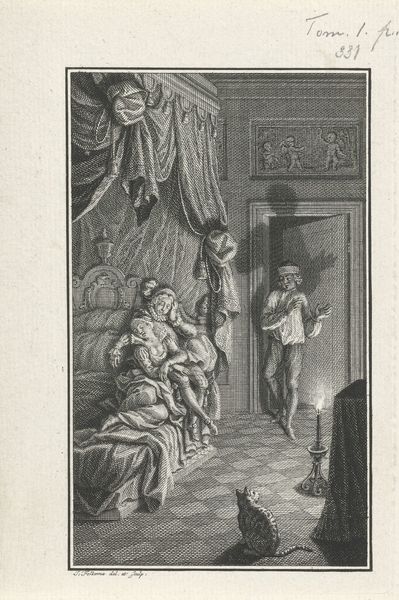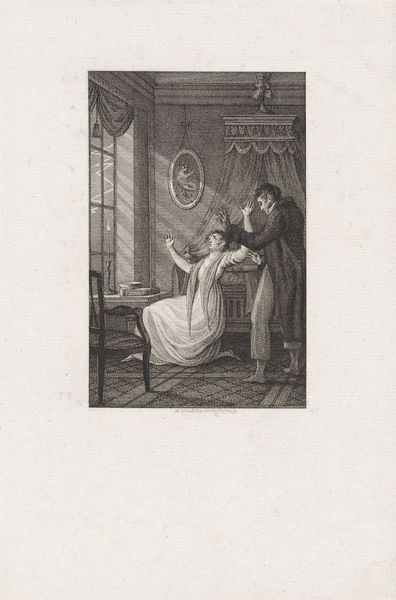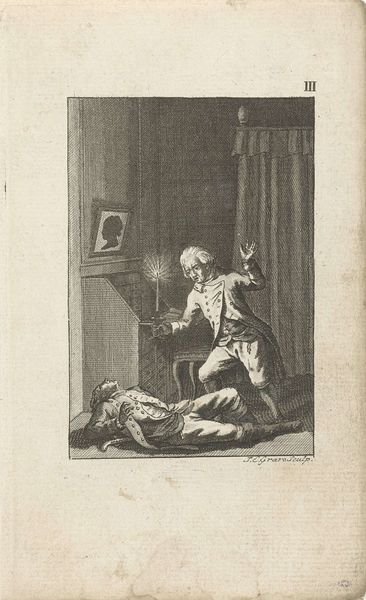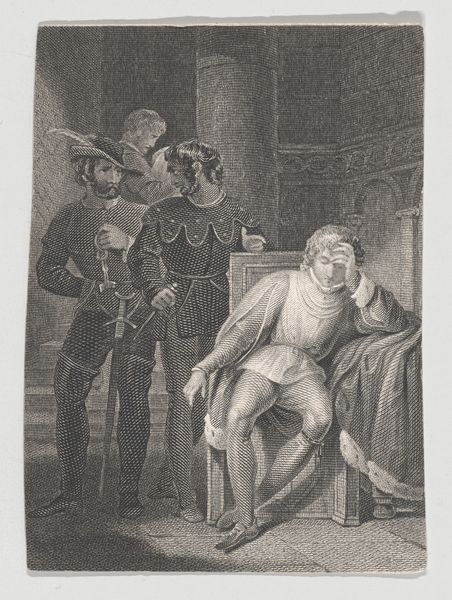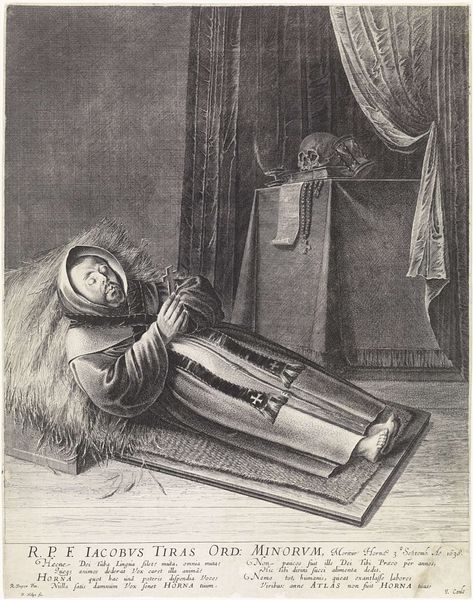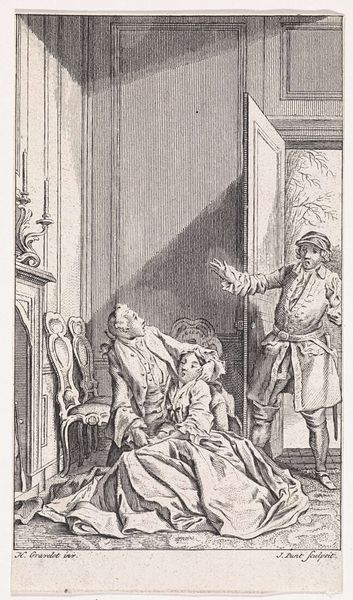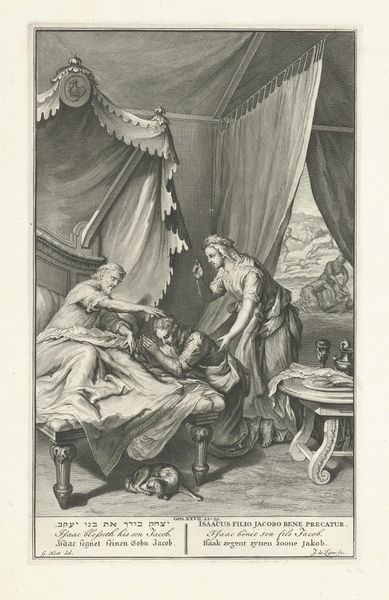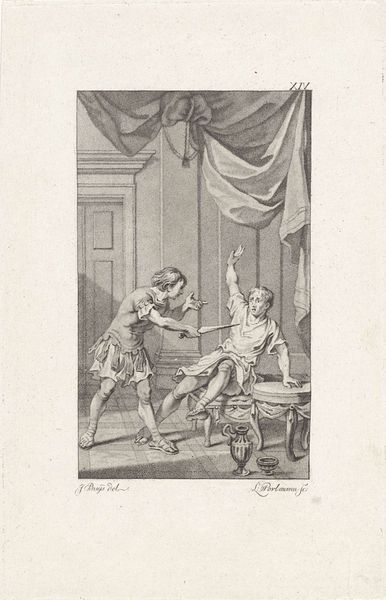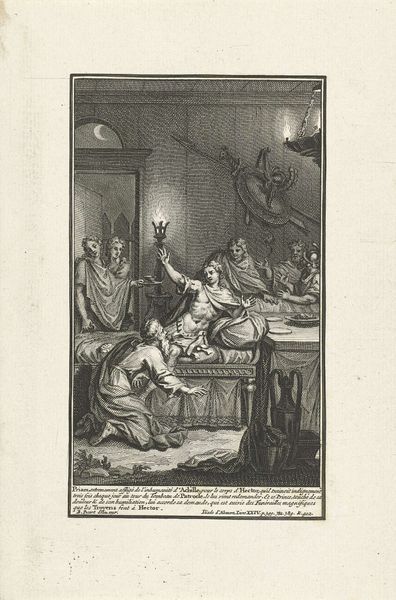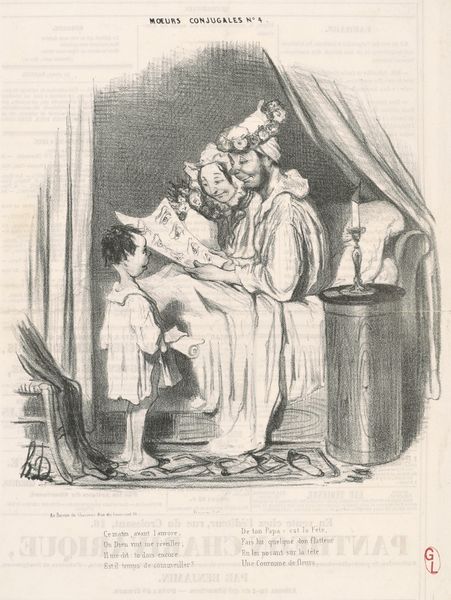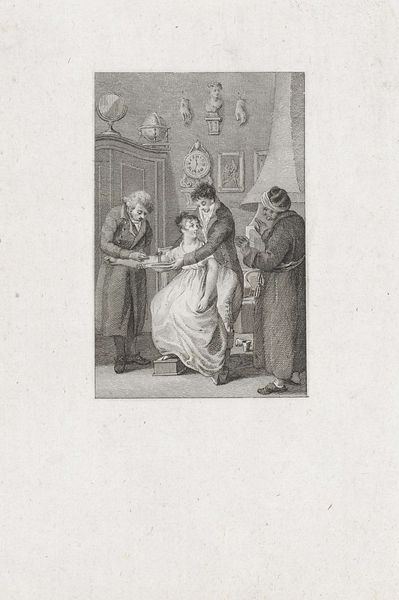
print, engraving
#
narrative-art
# print
#
figuration
#
intimism
#
romanticism
#
genre-painting
#
engraving
Dimensions: height 114 mm, width 78 mm
Copyright: Rijks Museum: Open Domain
Curator: This engraving, housed here at the Rijksmuseum, is titled "Man in een slaapkamer bij een man in een bed," or "Man in a bedroom with a man in a bed." It dates back to 1828, the handiwork of Philippus Velijn. Editor: My immediate response is one of dramatic tension. The lighting, stark as it is in this medium, creates a sense of unease. The textures of the bedclothes and the man’s garments seem palpable, rough hewn perhaps. Curator: That palpable texture comes from Velijn’s skillful use of engraving to depict an interior scene that carries quite a weight when we consider notions of privacy, masculinity, and perhaps even class in 19th-century Netherlands. It reflects the Romantic fascination with emotional intensity but filters it through a decidedly bourgeois lens. Editor: Indeed. Consider the composition: the stark lines of the bed juxtaposed with the shadowy figure lurking in the background. What were the prevailing methods for crafting this print, and what were the contemporary debates around printmaking’s place in the broader art world? Curator: Printmaking was vital to democratizing images, making art accessible, particularly politically charged imagery. The materials - copper plates, inks - were becoming increasingly standardized but the skill of the engraver dictated the emotive power. Look at the rendering of fabrics; social status announced through things. Editor: And we should look closely at the implements laid carefully upon the table: is that a chalice? Is it simply another luxury object to be consumed? I do want to turn to the canine participant—they give such vital energy! Curator: Yes, the dog seems crucial, as it seems to both instigate conflict and serve as material symbol of upper middle-class domesticity—a constant tension evident in genre paintings such as this. It brings us to considering, in a contemporary context, what “domestic security” truly signifies and for whom. Editor: This has certainly opened my eyes to the multiple layers of interpretation embedded in seemingly simple scenes. The devil is always in the details of production and consumption. Curator: For me, this artwork brings to the fore many compelling narratives about domesticity and visibility. A seemingly conventional portrait opens a path to consider historical, social, and personal tensions and its ongoing relevance.
Comments
No comments
Be the first to comment and join the conversation on the ultimate creative platform.

